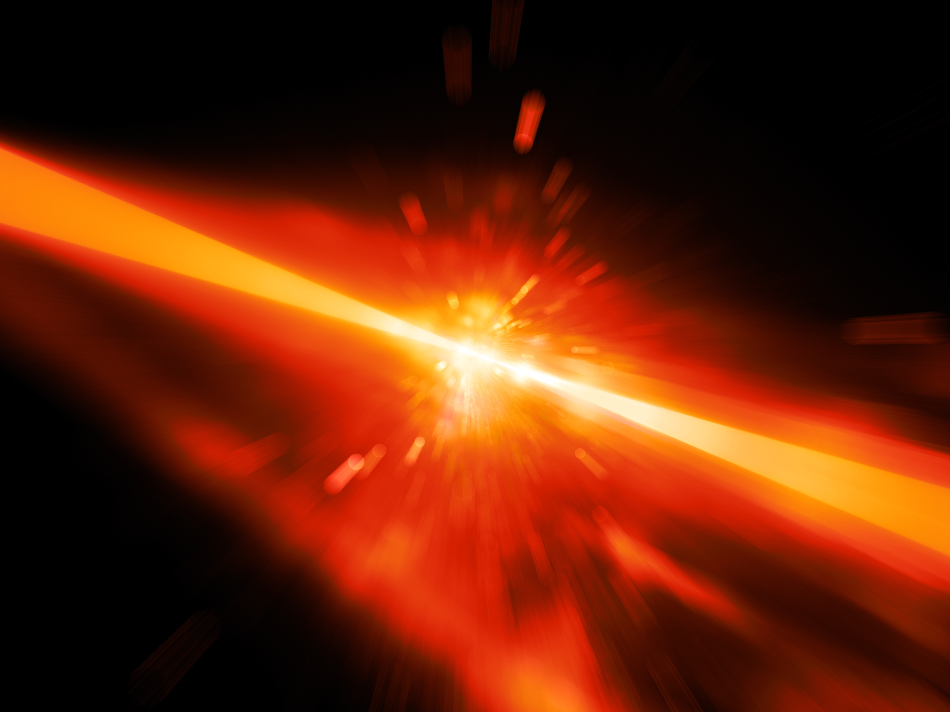
Image Credit: sakkmesterke/Shutterstock.com
The staple of high power lasers was established in 1996 when the method of chirped-pulse amplification was used to create the world's first petawatt pulse with the Nova laser. Scientists have since been working on increasing the energies achievable with this process, seeking to generate laser-driven fusion.
Researchers at Lawrence Livermore National Laboratory (LLNL), California, have continued to work to increase the power of these lasers, attempting to heat capsules of hydrogen to fusion temperatures with pulses carrying 1.8 megajoules of energy. However, the pulses are limited to creating just 1 PW of power. Now, scientists in China look as though they are set to overcome these limitations, claiming to be working on a laser that could rip apart empty space.
Plans for a Laser so Powerful it Could Rip Apart Empty Space
The team in Shanghai, China, is attempting to break records by creating the world’s most powerful laser. The key to their technology lies in the use of a single cylinder of titanium-doped sapphire. Light is kindled in the crystal and sent through a system of lenses and mirrors, then is distilled in the Shanghai Superintense Ultrafast Laser Facility (SULF), creating light pulses of unprecedented power. Back in 2016, the laser was measured, generating power of 5.3 million billion watts. However, while the pulses are powerful, they only last shorter than one trillionth of a second. The team is now working on improving the power of their laser.
In 2018, the team claimed they would start building a 100-PW laser, called the Station of Extreme Light (SEL). It is intended that the laser will achieve light pulses that subject targets to temperatures and pressures that are not normal on Earth by as soon as 2023.
High-energy physics and the medical sector will likely benefit from the use of this laser in new applications. It is theorized that the laser would be capable of breaking the vacuum, the term used to describe tearing electrons and positrons from empty space. Essentially, it would give scientists the power to create something from nothing. While the Chinese team is leading the way in this technology, there are teams around the world competing to manage the feat first. Below, the journey to create high-powered lasers will be described, as well as the role that laser fusion has played.
The Journey to the High-Power Laser
Lasers were invented in 1960, using the technique of exciting electrons inside atoms of a gas, crystal, or semiconductor with an external pump. The process results in the emittance of photons as the electrons return to their ground state. This release of photons stimulates more electrons to emit photons, having a cascading effect, causing photons to emerge in a tight stream. This is different from how beams of light are structured.
Scientists quickly realized that there are two ways in which lasers can be designed to increase power. The first is to boost the energy of the laser, and the second is to shorten the duration of the pulses.
The journey to create high power lasers began at Lawrence Livermore National Laboratory (LLNL) in 1970, where researchers attempted to increase the energy of the laser by routing the beams through lasing crystals. However, increasing the intensity of the energy put the amplifiers at risk of damage, forcing the team to create bigger amplifiers. In 1983, this limitation was overcome when scientists figured out that a short laser pulse could be stretched in time, which decreased the impact of its intensity and saved the amplifiers. The method was demonstrated by spreading the pulse into its separate colors, amplifying the diffracted light, and then recompressing it together to create a powerful laser safely.
This method was enhanced further in 1996 when a team shortened pulses from the Nova laser using chirped-pulse amplification to achieve the first petawatt.
A decade later, a team managed to induce fusion of a target by focusing 192 high-energy pulses onto it. However, the long pulses limited the laser’s power to less than a petawatt. Later, the LLNL was able to increase this energy in their pursuit of laser-driven fusion. The goal of reaching laser-driven fusion has motivated work, which has resulted in the creation of a laser that can generate 1.8 megajoules of energy and stimulate hydrogen to fusion temperatures. The team in Shanghai is currently attempting to improve on this by shortening the length of the laser pulse to just femtoseconds.
References and Further Reading
Disclaimer: The views expressed here are those of the author expressed in their private capacity and do not necessarily represent the views of AZoM.com Limited T/A AZoNetwork the owner and operator of this website. This disclaimer forms part of the Terms and conditions of use of this website.